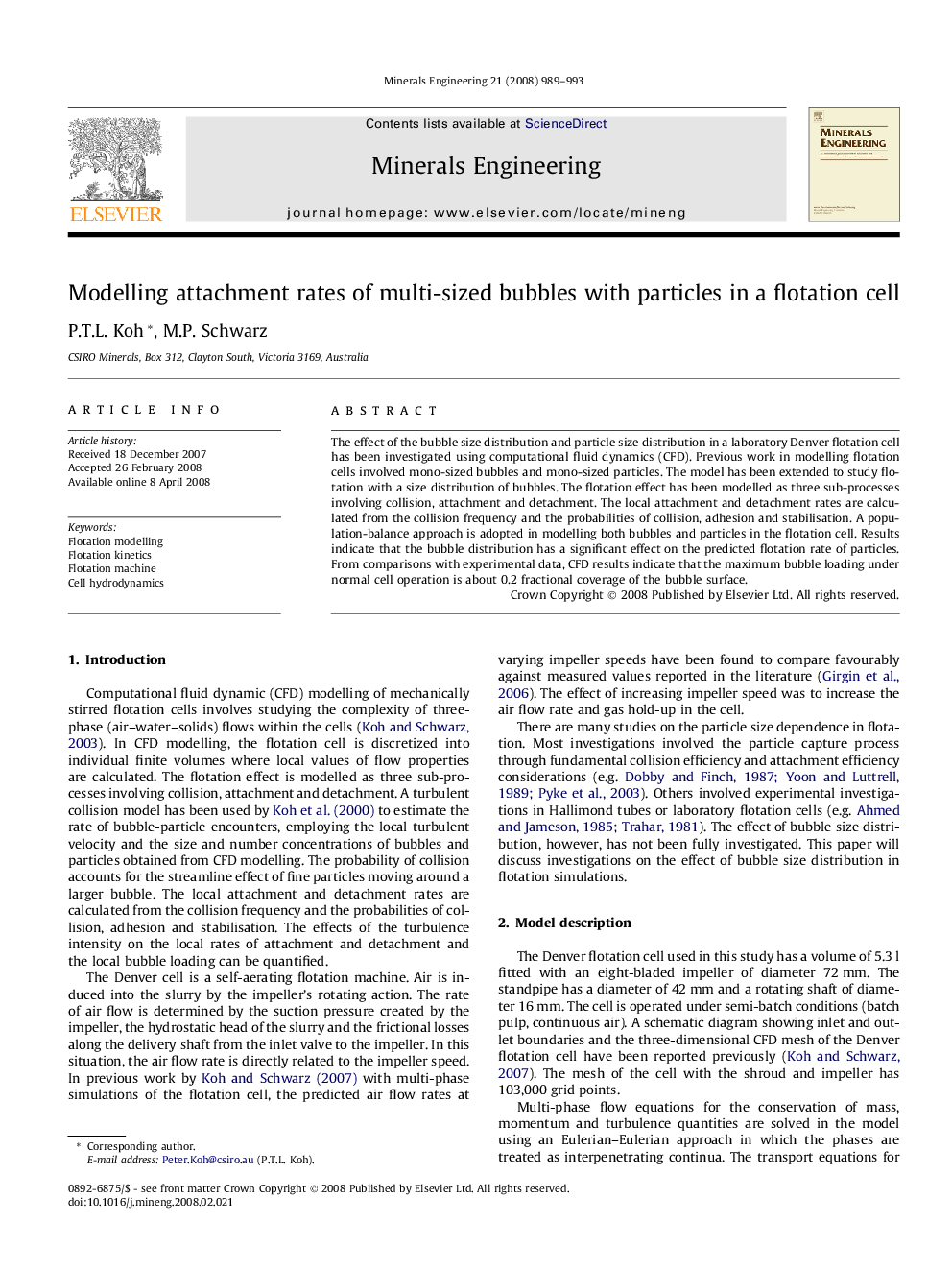| Article ID | Journal | Published Year | Pages | File Type |
|---|---|---|---|---|
| 234621 | Minerals Engineering | 2008 | 5 Pages |
The effect of the bubble size distribution and particle size distribution in a laboratory Denver flotation cell has been investigated using computational fluid dynamics (CFD). Previous work in modelling flotation cells involved mono-sized bubbles and mono-sized particles. The model has been extended to study flotation with a size distribution of bubbles. The flotation effect has been modelled as three sub-processes involving collision, attachment and detachment. The local attachment and detachment rates are calculated from the collision frequency and the probabilities of collision, adhesion and stabilisation. A population-balance approach is adopted in modelling both bubbles and particles in the flotation cell. Results indicate that the bubble distribution has a significant effect on the predicted flotation rate of particles. From comparisons with experimental data, CFD results indicate that the maximum bubble loading under normal cell operation is about 0.2 fractional coverage of the bubble surface.
